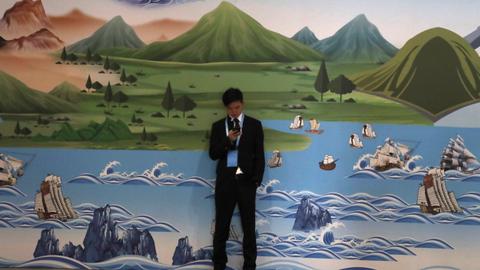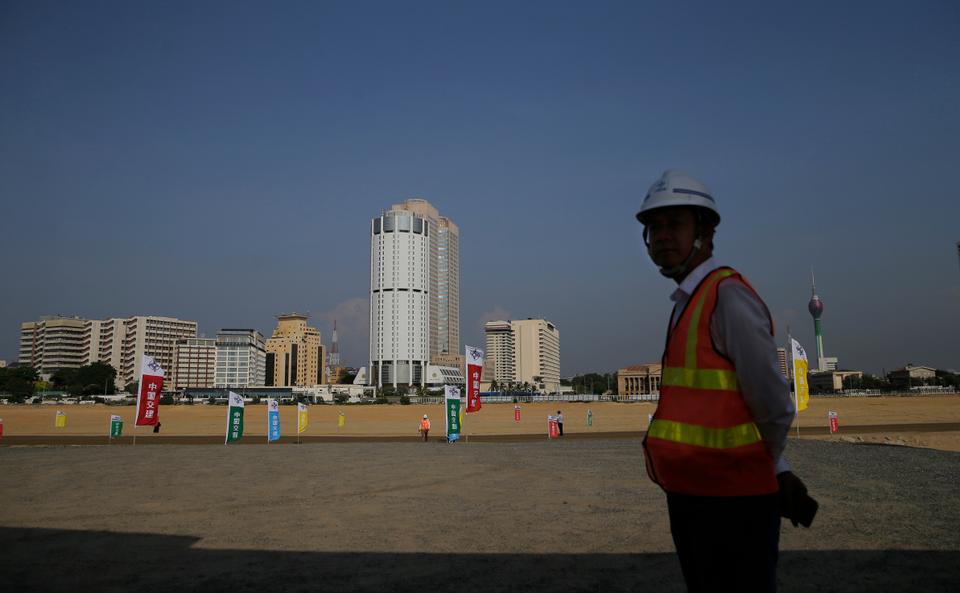The Rajapaksa government’s decision to revive the stalled East Container Terminal project is a signal that Colombo is shifting towards balancing its ties with Beijing and New Delhi, experts argue.
Sri Lankan President Gotabaya Rajapaksa announced on Wednesday that a long-delayed Indian and Japanese deep-sea terminal project would proceed.
The approval came after reviewing “regional geopolitical concerns,” Rajapaksa’s office said, a reference to India’s suspicion of Chinese interests at the same port.
Colombo’s ties with New Delhi have been tested since the Rajapaksa government last year decided to review the estimated $500 million deal signed in May 2019 between India, Japan and the previous Sirisena government to develop Colombo’s East Container Terminal (ECT).
Awarded to India’s Adani Group and Japanese partners in a joint venture, the contract gives Sri Lanka a 51 percent stake and 49 percent to Indian and Japanese stakeholders.
However, the project was put on hold amid local opposition. Developing national assets involving foreign actors is a sensitive political issue in the island, particularly for nationalist trade unions.
Impetus to kickstart the ECT appears to have come on the heels of India’s External Affairs Minister S Jaishankar’s three-day visit to Sri Lanka last week.
Resuscitating a deeply indebted economy – now battered by Covid-19 – are overriding priorities for the Rajapaksa government.
According to some observers, the decision to revive the project signals Colombo’s desire to manage its relations with major powers and stem the perception of it being ensnared by Beijing.
“The decision to review the ECT project was interpreted – in India and beyond – as a clear shift towards China,” said Gareth Price, Senior Research Fellow at the Asia-Pacific Programme in Chatham House. “It’s revival would suggest that the Sri Lankan government has reverted to an attempt to shift towards a balance in its relations with China and India.”
“There may be a strategic calculation, as well as hopes that major infrastructure projects could provide an economic stimulus,” he told TRT World.
Similarly for Hemant Shivakumar, a Senior Analyst and South Asia specialist at Control Risks, the Rajapaksa government’s decision underlines how its foreign policy is being wedded to economic imperatives.
“The Sri Lankan government will look to leverage such economic aid and foreign investments to manage their foreign debt obligations, both in 2021 and beyond, as well as indirectly help the local economy,” Shivakumar told TRT World.
According to the Economic Times, New Delhi and Colombo are also discussing a deal to allow Sri Lanka to delay its debt repayments to India.
“Moreover, diversifying the sources of economic aid from countries like India and Japan will help mitigate to some extent domestic criticism – especially from opposition parties – over the Rajapaksas’ drawing closer to Beijing,” Shivakumar adds.
In addition to the ETC, the Japanese-funded Colombo Light Railway project and a $480 million Millennium Challenge Corporation grant from the US were also shelved last year, leading many to believe Colombo was trying to distance itself from financing by the “Quad” nations – US, India, Japan and Australia – that are looking to counter China’s footprint in the Indian Ocean and Asia Pacific.
Shivakumar believes there is also a strong economic case to be made for deals like the ECT.
“Japanese and Indian credit remains attractive due to their concessional nature when you consider factors such as longer repayment periods and low interest rates,” he argued.
Price agreed, adding that “unlike the Chinese-constructed ports, the ECT project doesn’t appear to place Sri Lanka in debt.”
The state-run Sri Lanka Ports Authority (SLPA) described the deal, with the Japan Bank for International Cooperation providing a 40-year soft loan with a 0.1 percent interest rate, as “one of the best loan terms Sri Lanka has obtained”.
ECT is one of the deep seaports at the Port of Colombo (PoC) and is adjacent to the Colombo International Container Terminal, which China controls an 85 percent stake in with remainder owned by the SLPA.
The PoC comprises Jaya Container Terminal (JCT), South Asia Gateway Terminal (SAGT) and the Colombo International Container Terminal (CICT). According to the SLPA, Japan has cooperated on the development of the JCT since the 1980s.
Over 70 percent of the transshipment business at the port is linked to India, making Sri Lanka an invaluable blue water access point for New Delhi.
“From an Indian perspective, given the importance of Colombo for the trans-shipment of goods going to India, it’s clear as to why India wouldn’t want to rely on a Chinese-owned port, as it aspires to de-couple from China,” Price said.
For Sri Lanka, domestic concern in some quarters centres on China’s considerable influence over the development of the country is turning it into a “banana republic” under Beijing’s sway. The US has criticised Beijing for acting as a “predator” in the island nation.
There have been accusations of “debt-trap diplomacy” as well. After struggling to pay off debts related to the Chinese-financed Hambantota Port Development Project, Colombo gave up the port to Beijing for 99 years in December 2017.
The same firm involved in the controversial Hambantota port project, the China Harbor Engineering Company recently netted the first contract for an FDI project in Sri Lanka’s $13 billion Port City.
For the Chinese, the seafront Port City is billed as an important part of its Belt and Road Initiative.
As regional and global powers continue to jockey for influence in the Indian Ocean, Sri Lanka will aim to leverage its geostrategic importance into economic development it desperately needs – an outcome that pragmatic statecraft can work in their favour.








